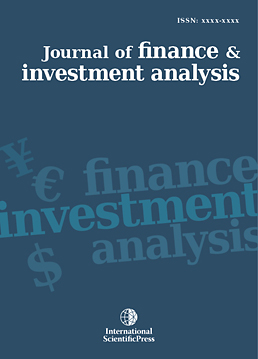Journal of Finance and Investment Analysis
On the Importance of Evaluating Mutual Fundís Alpha via Alternative Frameworks
-
 [ Download ]
[ Download ]
- Times downloaded: 10308
-
Abstract
We examine over 1000 U.S non-specialized mutual funds in 2001-2009 and offer a comprehensive report on benchmark model impact on fundís estimated alpha (risk-adjusted excess return). Consistent with previous literature, we find that estimated alphaís magnitudes strongly depend on the benchmark system. Furthermore, there exists substantial disagreement among our 7 benchmark systems regarding fundís classification as good or poor, and fundís ranking relative to other funds. Notably, the Jensen (CAPM based) alphas are most deviant from other modelsí alphas, and the best funds recommended by it (the CAPM) score lower Sharpe ratios in out of sample tests. This suggests that asset management and investment advice should also and perhaps mainly rely on performance scores of multi-factor benchmark models.
